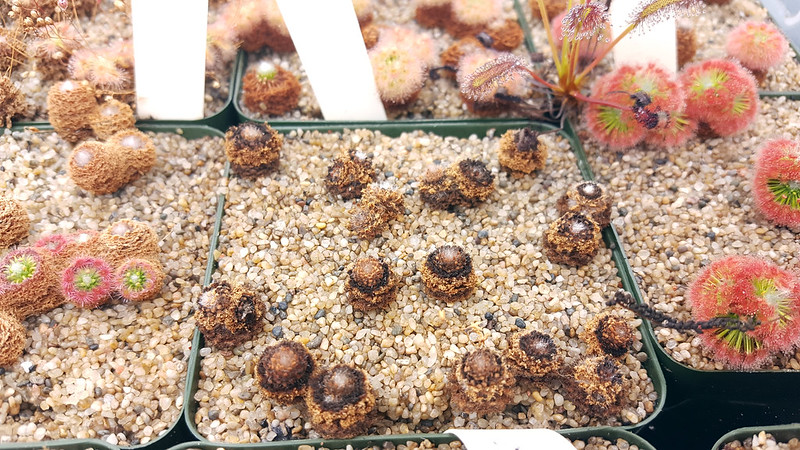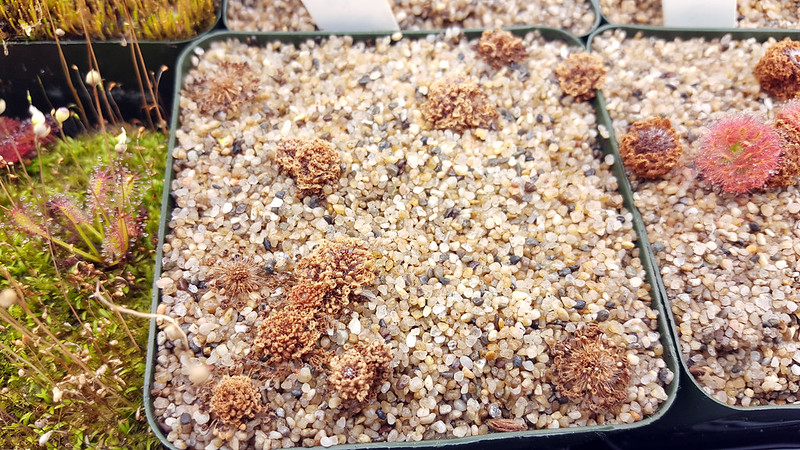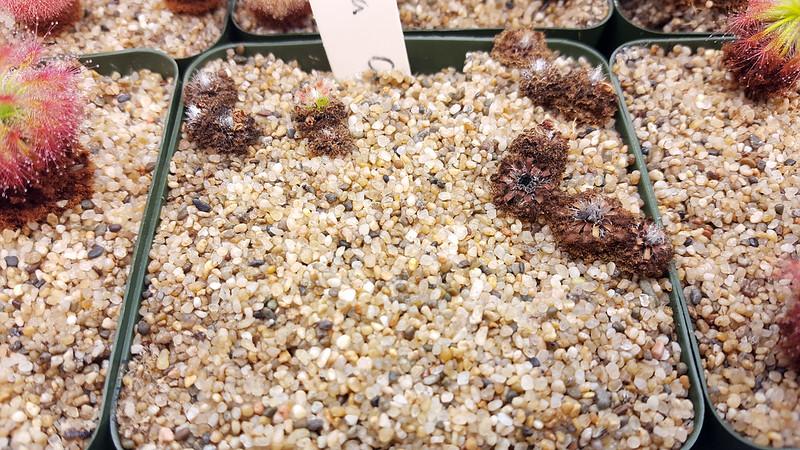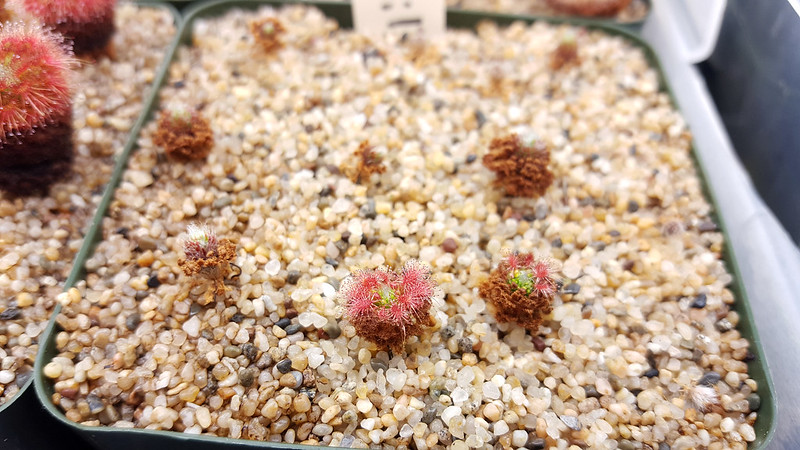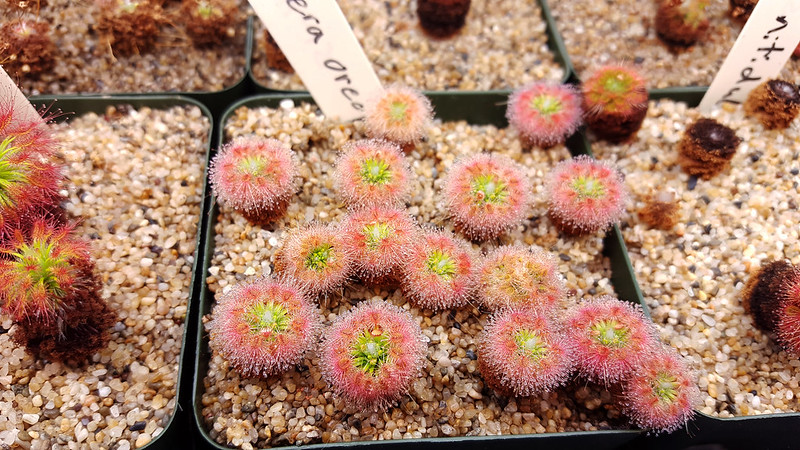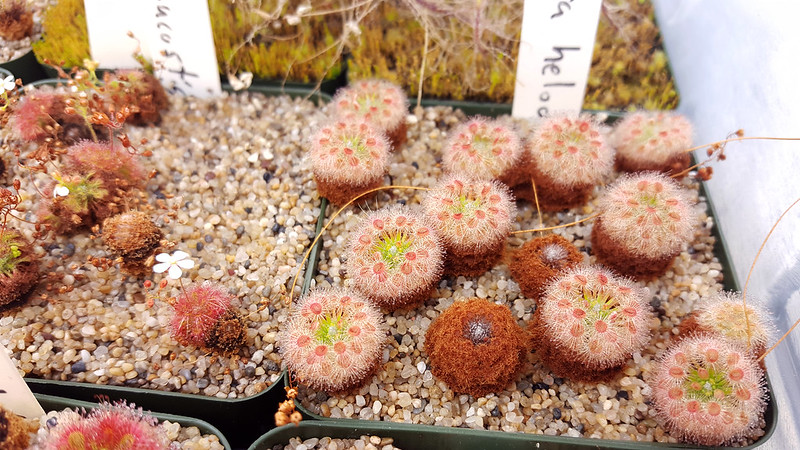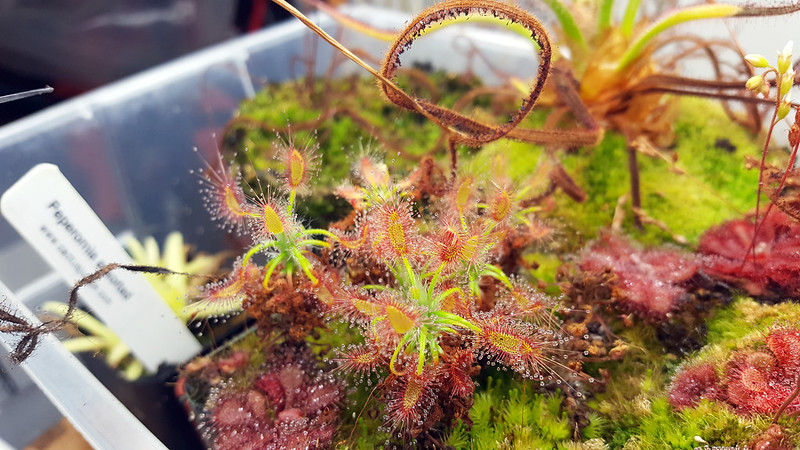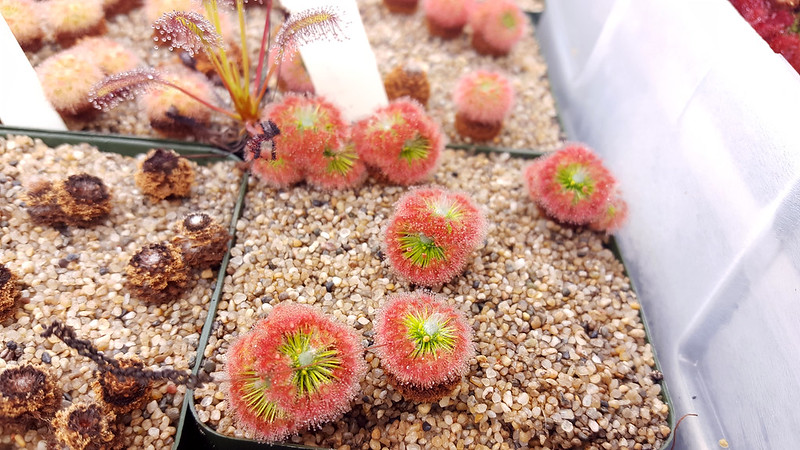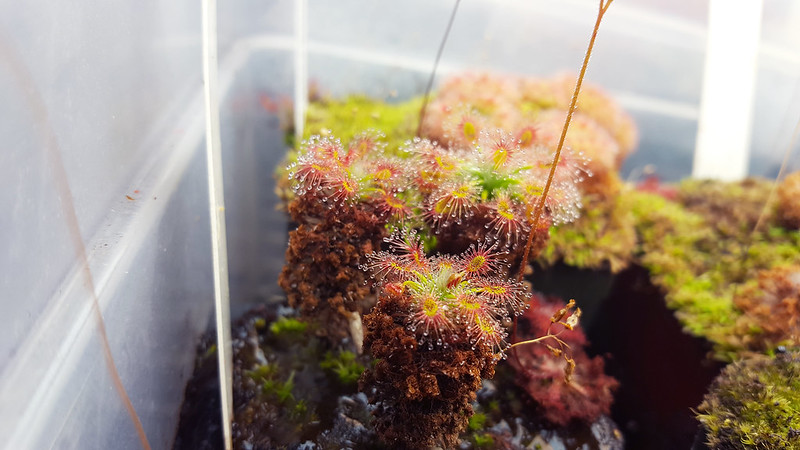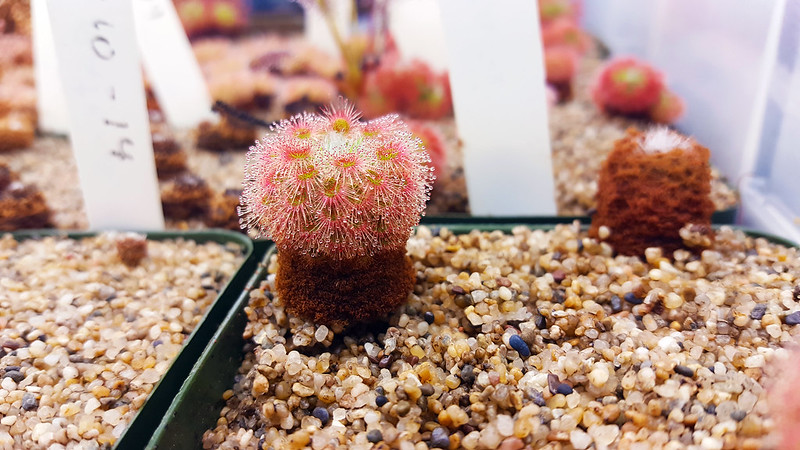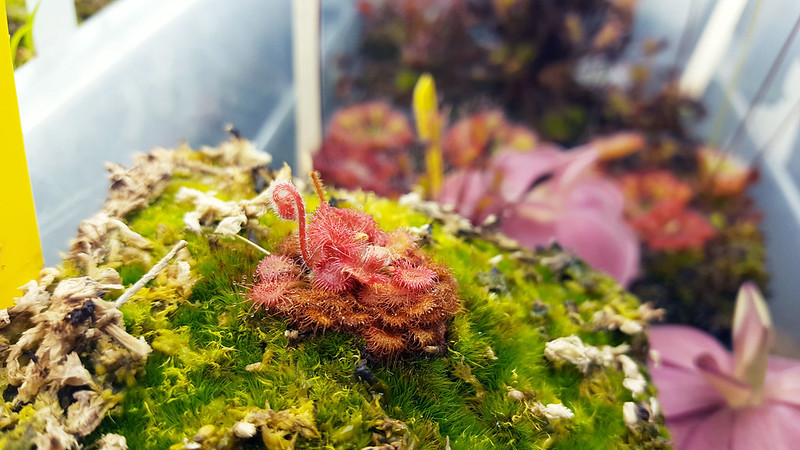Hahahah okay let's just admit that I'm probably not going to make 17
posts in a month again (like I did back in April '14) any time soon.
Okay well, that established let's see what photos have been languishing
on my phone not being posted anywhere.
Drosera binata 'Marston Dragon' looked pretty nuts back on July 31st.
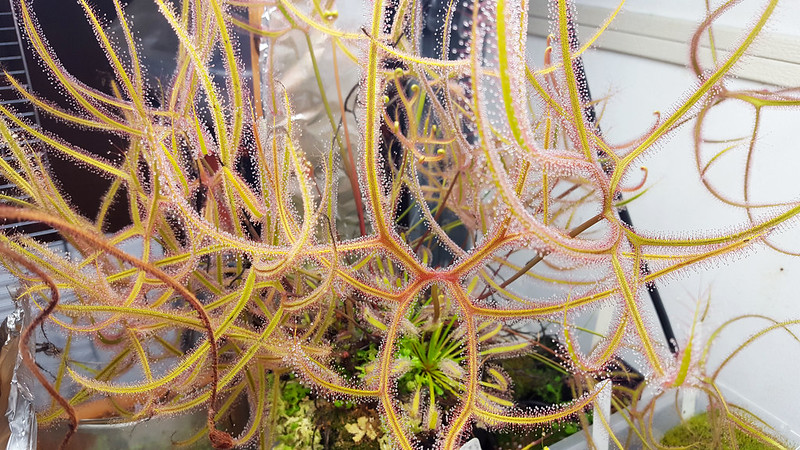 |
| I wonder what the total volume of that dew is. Probably an ounce or two. |
I still have no idea what I'm supposed to do with this plant. At least it looks rad as heck.
Fair warning, since I'm gonna be using pictures I've taken
at work a fair amount, there are gonna be more neps than there have been on the blog in the past. Considering this
Nepenthes eymae ×
jacquelineae though, can you blame me?
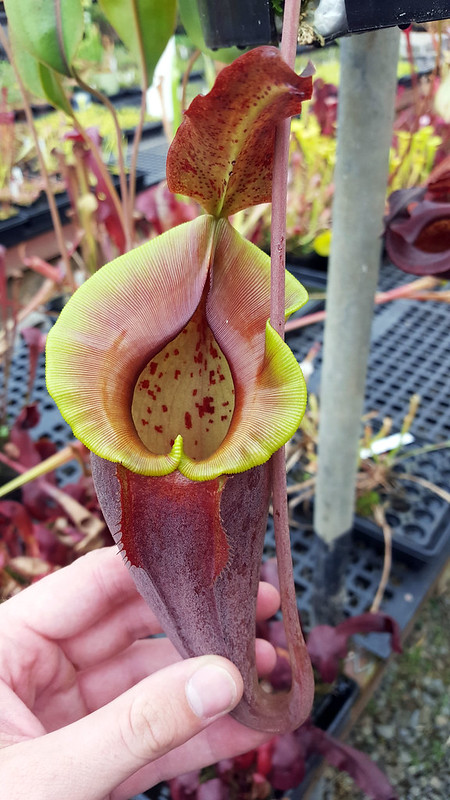 |
| I really like the glaucous character of the pitcher body. |
This is a freshly-opened pitcher on what is probably my 4th favorite nep in the greenhouse (please don't ask me what the top 3 are, I have no idea). Wowzer!
Don't worry though, there are also utrics at the greenhouse, such at this
Utricularia blanchetii.
 |
| So small and fancy. |
This is probably the most floriferous of the new little terrestrials I've been messing with lately. It's also completely adorable!
And at home, I still have sundews, even if I'm barely able to rouse myself to water them properly. Here's my
Drosera kaieteurensis starting a new flower stalk.
Note that I didn't refer to it as
Drosera felix. That because when I showed photos of it to Fernando Rivadavia he was unequivocal that the fuzzy flower stalk indicated
D. kaieteurensis. He had no strong opinions about the purported synonymy of the two taxa, but insisted that if the flower stalk was fuzzy it couldn't be
D. felix. So there.
Another South American sundew with a difficult-to-spell toponym for its specific epithet is
Drosera graomogolensis. It's also a total beast in spite of all my neglect.
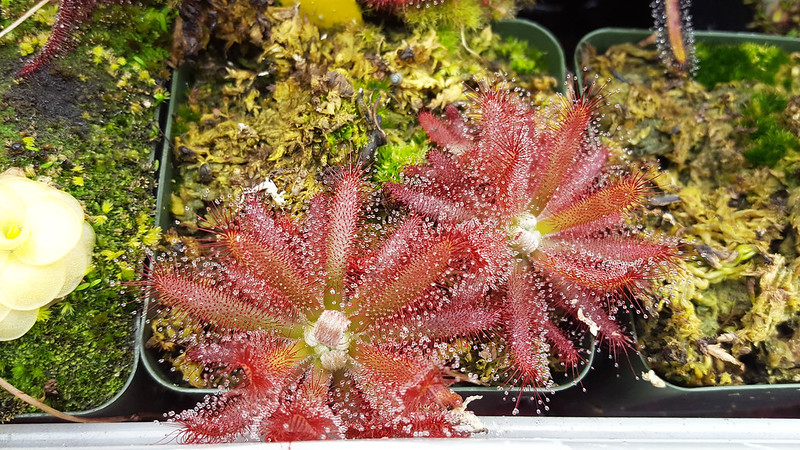 |
| This is an extravagant plant. |
Root cuttings are an awesome way to get big plants fast, especially if it's one of the species with big fat roots. Great stuff!
Another utric that I'm super stoked about is
Utricularia biloba, which opened its first flowers for me a week or so ago.
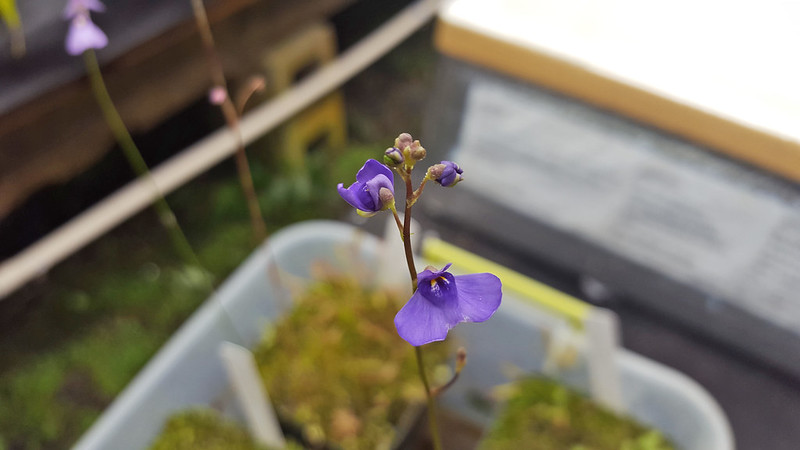 |
| These also have a neat chubby spur that's bright green. |
As others have said of this species, photos don't do justice to the color, which is a deep violet with a hazy blue depth to it. Weirdly, the blue comes out more for me if I blink rapidly while looking at the flowers. Super interesting plant! Thanks Howard!
Finally, I've been selling select plants
on Facebook – one-off neps, as well as new items like utrics and sundews that aren't in huge production yet. This
Nepenthes fusca sold almost immediately this morning. I can't imagine why.
 |
| I wish we had way more of this species than we currently do. It's wonderful! |
Anyway, those are some plants. They're pretty cool.
